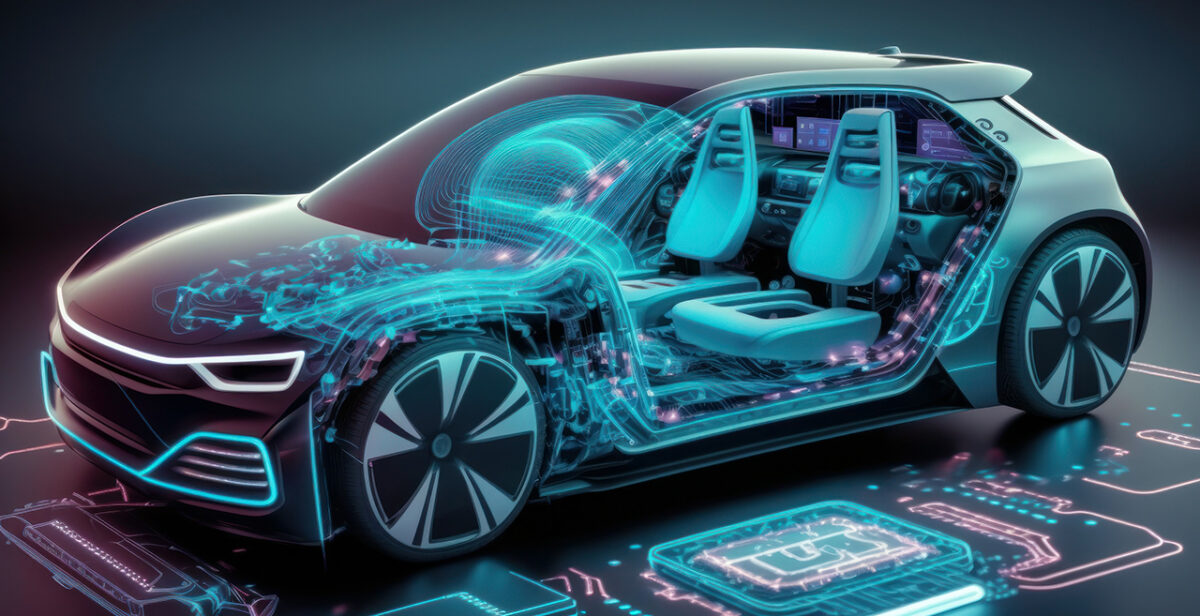
The evolution of autonomous vehicles (AVs) is one of the most exciting technological advancements of the 21st century, and artificial intelligence (AI) is at the heart of this transformation. Over the past decade, AI has played a crucial role in developing self-driving technologies, enabling vehicles to perceive their environment, make decisions, and navigate complex roadways with minimal human intervention. As we look to the future, the continued progress of AI in autonomous vehicles will likely revolutionize transportation, enhance safety, and reshape our cities. However, the path to widespread adoption comes with its own set of challenges—ranging from safety and ethical dilemmas to regulatory concerns.
In this article, we’ll explore the current state of AI in self-driving cars, the promising prospects for their future, and the hurdles that must be overcome to fully integrate autonomous vehicles into daily life.
1. Current State of Autonomous Vehicles
As of 2024, the development of autonomous vehicles is moving quickly, but the industry is still in its early stages of deployment. While fully autonomous cars (Level 5 autonomy, where the vehicle requires no human intervention) remain limited, several companies are already testing and deploying Level 3 and Level 4 self-driving systems in select areas.
Key Developments in AI for Autonomous Vehicles:
- AI-Powered Perception Systems: AI is used to power the perception systems of self-driving cars, which include a combination of cameras, LiDAR (Light Detection and Ranging), and radar to understand the surrounding environment. AI algorithms process the data from these sensors to identify objects, pedestrians, traffic signs, other vehicles, and road conditions, allowing the vehicle to navigate safely.
- Machine Learning & Decision-Making: Machine learning algorithms allow AVs to make decisions in real time. For example, if an obstacle is detected on the road, AI helps the car decide whether to brake, steer around it, or take another action based on traffic conditions, speed, and surrounding factors.
- Mapping and Localization: Autonomous vehicles rely on detailed maps and GPS data to understand their precise location. AI is used to improve map accuracy and enable the car to update its position dynamically as it moves through unfamiliar terrain.
Some companies, such as Waymo (a subsidiary of Alphabet), Tesla, and Cruise, have been actively developing and testing AVs in cities with increasing levels of autonomy. Although autonomous taxis and delivery vehicles are operational in select markets, full integration of self-driving vehicles into general traffic still faces several barriers.
2. AI’s Role in Enhancing Safety
One of the major promises of autonomous vehicles is their potential to reduce traffic accidents and fatalities, which are often caused by human error. AI’s ability to make split-second decisions, process vast amounts of data, and adhere to strict rules of the road is expected to lead to safer transportation systems.
How AI Improves Safety:
- Reduced Human Error: Human drivers are prone to distractions, fatigue, and poor decision-making under stress. AI, on the other hand, doesn’t tire, doesn’t get distracted, and is always able to monitor all aspects of the car’s surroundings.
- Faster Reaction Times: AI systems can react to sudden changes in the driving environment faster than humans. For example, an autonomous car can apply the brakes instantly if a pedestrian steps onto the road, whereas a human driver might require a moment to process the situation.
- Predictive Analysis: By analyzing real-time data from sensors and historical driving patterns, AI can predict potential hazards and adapt driving behavior accordingly. This includes identifying risky behaviors from other drivers, such as swerving or speeding, and adjusting the vehicle’s actions to avoid collisions.
Despite these safety improvements, the transition from human-driven to fully autonomous vehicles comes with its own set of challenges in terms of system reliability and accident liability, which we’ll explore next.
3. Ethical Challenges and AI Decision-Making
As AI continues to power autonomous vehicles, it introduces a number of ethical dilemmas. At the heart of these concerns is the “trolley problem”: a classic ethical dilemma where a self-driving car must make a life-or-death decision. For instance, if an unavoidable collision occurs, should the car prioritize the safety of its passengers or swerve to minimize harm to pedestrians, even at the expense of its occupants?
Key Ethical Concerns:
- Moral Decisions in Critical Situations: In the event of an imminent accident, how should AI prioritize its actions? This decision-making process involves complex ethical frameworks, as the algorithm must be trained to make decisions that align with societal values. However, no universal agreement exists on how these decisions should be made, and different countries may adopt different ethical standards.
- Bias in AI Systems: AI is only as good as the data it’s trained on, and if that data includes biases—whether related to race, gender, or socioeconomic status—the vehicle’s decision-making could unintentionally favor one group over another. Ensuring fairness in AI decision-making processes will be critical to gaining public trust.
- Accountability: Who is responsible when an autonomous vehicle makes a mistake? If an AI system causes an accident, determining liability—whether it falls on the manufacturer, the AI developer, or the vehicle owner—will be a key legal challenge.
As autonomous vehicles move toward full autonomy, policymakers and developers must collaborate to address these ethical concerns and create frameworks for responsible AI decision-making.
4. Regulatory and Legal Challenges
The widespread deployment of autonomous vehicles will require a comprehensive regulatory framework to ensure safety, fairness, and accountability. In 2024, several regions are taking significant steps toward regulating AVs, but challenges remain regarding laws, insurance, and liability.
Key Regulatory Challenges:
- Testing and Deployment Regulations: Different countries and regions have varying levels of regulation when it comes to autonomous vehicle testing. Some areas, like California, have extensive rules and testing guidelines, while others are still crafting laws to allow for testing and deployment. The patchwork regulatory landscape complicates the ability for companies to scale their self-driving programs globally.
- Insurance: Traditional car insurance policies are designed for human drivers, but autonomous vehicles will require new insurance models. Determining the liability in cases of accidents involving self-driving cars (whether it’s the manufacturer or the software developer) will be a key issue.
- Data Privacy and Security: Autonomous vehicles generate massive amounts of data. Protecting that data from cyber threats, while also safeguarding the privacy of passengers, is a growing concern. As vehicles become more interconnected, regulatory bodies will need to create guidelines around how this data is collected, shared, and protected.
What’s Next?:
In the coming years, governments around the world will need to pass clearer regulations on autonomous vehicles, setting safety standards, developing laws around AI decision-making, and creating unified international guidelines for self-driving cars. These regulations will need to evolve alongside the technology to ensure public safety and trust.
5. The Future Prospects of AI in Autonomous Vehicles
Looking ahead, the future of AI in autonomous vehicles is incredibly promising. While fully autonomous cars are not yet a universal reality, progress in AI technology and infrastructure is expected to accelerate. Some of the key developments we can expect by 2025 and beyond include:
- Level 5 Autonomy: In the future, Level 5 autonomous vehicles, which require no human intervention, will become more common, with AI taking full control of all driving tasks. This will significantly change the way we think about car ownership, public transport, and urban planning.
- Improved AI Algorithms: As AI systems continue to improve, we will see greater sophistication in self-driving cars’ decision-making, allowing them to handle more complex road scenarios and environmental factors (like adverse weather conditions).
- Integration with Smart Cities: Autonomous vehicles will become a crucial part of smart cities, where connected infrastructure (like traffic lights and road signs) communicates with self-driving cars, ensuring smoother traffic flow and reducing congestion.
- Environmental Impact: Autonomous vehicles, combined with electric powertrains, will likely contribute to reducing emissions. AI will optimize energy usage, creating more energy-efficient transportation solutions.
Conclusion: The Road Ahead
The future of autonomous vehicles, powered by AI, is on the cusp of a revolutionary transformation in transportation. With improvements in safety, efficiency, and convenience, AI has the potential to make self-driving cars a common sight on the roads in the coming years. However, significant challenges remain—ranging from ethical dilemmas to regulatory hurdles. As these issues are addressed, AI’s role in autonomous vehicles will only grow, offering a future where transportation is safer, more efficient, and more accessible.








